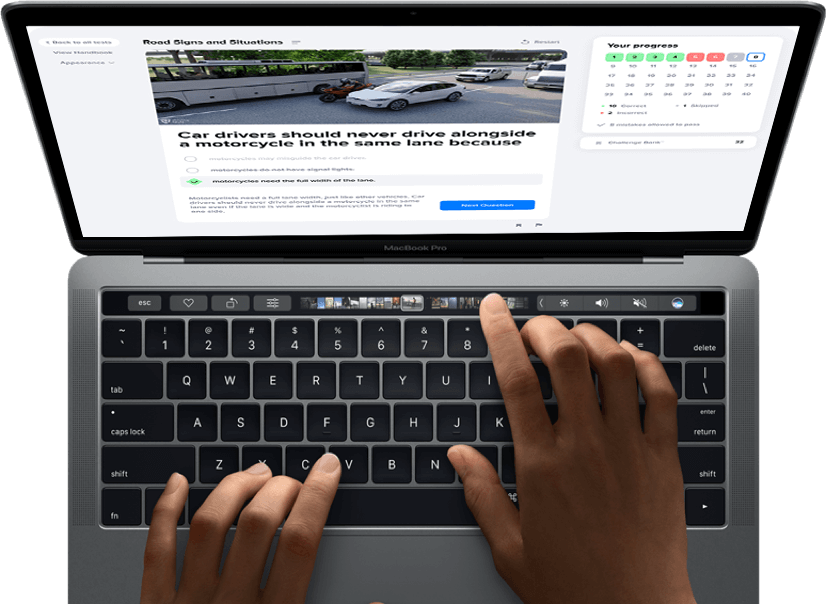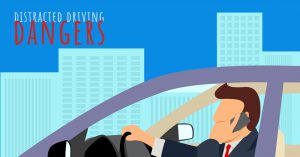We’ve all heard the warnings: Don’t speed. Don’t text while driving. Never – ever – drive drunk. But how often do Americans heed such warnings? Speeding may be rationalized by the 5-mph wiggle room myth. Texting may be excused by urgency. And as for driving under the influence – well, just blame it on the alcohol.
Do people commit driving infractions because they’re confident about their driving skills, or are they just imitating other people’s behaviors? We surveyed over 1,000 Americans to see how many have committed various driving infractions and how often they’ve witnessed them being performed by others. We also asked the respondents when they would speak up if their driver broke road rules. Continue reading to see a behind-the-wheel look at dangerous driving in America.
Operator Offenses

Speeding may not be the number one cause of motor vehicle accidents, but it has resulted in almost triple the number of deaths as distracted driving. While distracted driving covers a variety of actions, we focused on talking on the phone (without Bluetooth) and texting. When we considered each act separately, speeding was the most frequent, committed by 73 percent of respondents. Talking on the phone came next, with 62 percent taking a hand off the wheel to hold a phone to the ear. Driving while high was committed the least, with only 14 percent engaging in this driving infraction. Driving drunk or high may have been committed the least, but a substantial percentage of people witnessed these infractions being committed by others.
Monkey See, Monkey Do

Learning from other people’s mistakes didn’t always apply to driving infractions. On average, people were five times more likely to commit driving infractions if they had witnessed them before. The most drastic difference was in driving while high; those who had witnessed such acts were ten times as likely to commit them as those who had not seen them. But why? Basic psychology.
Driving is a skill we are not born knowing; we have to learn it at some point in our lives. While there are various forms of learning, observational learning may be responsible for some reckless driving habits. Observational learning is learning by example. This type of learning is most common in childhood. Adolescents who have grown up watching their parents committing driving infractions such as texting and driving may have acquired some of their parents’ bad habits.
Furthermore, optimism bias may make it difficult to heed warnings of how dangerous these infractions are. Individuals tend to think that they are exceptions to the rule. Observing others performing these infractions without consequence only strengthens this bias: If others can do it without getting hurt, why can’t they? Or so they think.
Speaking of Speed

Seventy-three percent of respondents admitted to speeding, but how fast is too fast? The answer may depend on age and gender.
Baby boomers were the most conservative about speeding. Most of them would as the driver to slow down once the vehicle was traveling 35 in a 20-mph zone, 54 in a 40-mph zone, or 74 in a 60-mph zone. Millennials would keep quiet until the driver reached 38 in a 20-mph zone, 59 in a 40-mph zone, and 79 in a 60-mph zone.
Additionally, the speeds that got men speaking up were similar to those for millennials and faster than the speeds women tolerated. Young men’s tendency to speed may cause them to be more tolerant of others doing so too.
Speak Up, Save a Life

Americans may trust their own abilities enough to risk driving infractions, but when their lives are in the hands of another driver, they take driving infractions much more seriously.
Respondents were the most lenient about speeding, with less than half willing to say something if their driver exceeded the speed limit by more than 15 mph. The majority stated that they would speak up if someone chose to text and drive or drive under the influence.
Shockingly, though, 17 percent of people would not speak up even if their driver were drunk or high. (Not speaking up can be deadly. The National Highway Traffic Safety Administration has found that 15 percent of those killed in drunk driving accidents were passengers in the impaired driver’s car.)
Committed Confidence

As with these other driving infractions, you might have supposed that those who took the risk of driving drunk did so because they had a lot of confidence in their driving ability. However, it looks like it really was just the alcohol talking.
Respondents who drove drunk rated their average driving skill as significantly worse than those who never got behind the wheel inebriated. Drivers who were high also rated themselves as slightly less skilled than their sober counterparts. In contrast, people who sped, talked on the phone, or texted while driving perceived their driving skills to be better than those who didn’t commit these driving infractions.
Better Safe Than Sorry
We’d all like to think we’re safe drivers, but most Americans commit driving infractions that put themselves and others at risk. Even staying silent while witnessing risky driving behaviors can be dangerous. As our survey showed, however, it’s best to lead by example. What people see, they tend to imitate. So, drive carefully not only for your own safety but also for the safety and well-being of others.
Methodology
We surveyed over 1,000 Americans about how often they committed various driving infractions or witnessed them being committed by other drivers. We also asked them to rate how likely they would be as passengers to speak to the driver if he or she committed an infraction.
Fair Use Statement
As long as you’re not driving, we grant you permission to use the images and content here for noncommercial purposes. Just don’t forget to link back to Driving-Tests.org, so the authors can receive proper credit.





